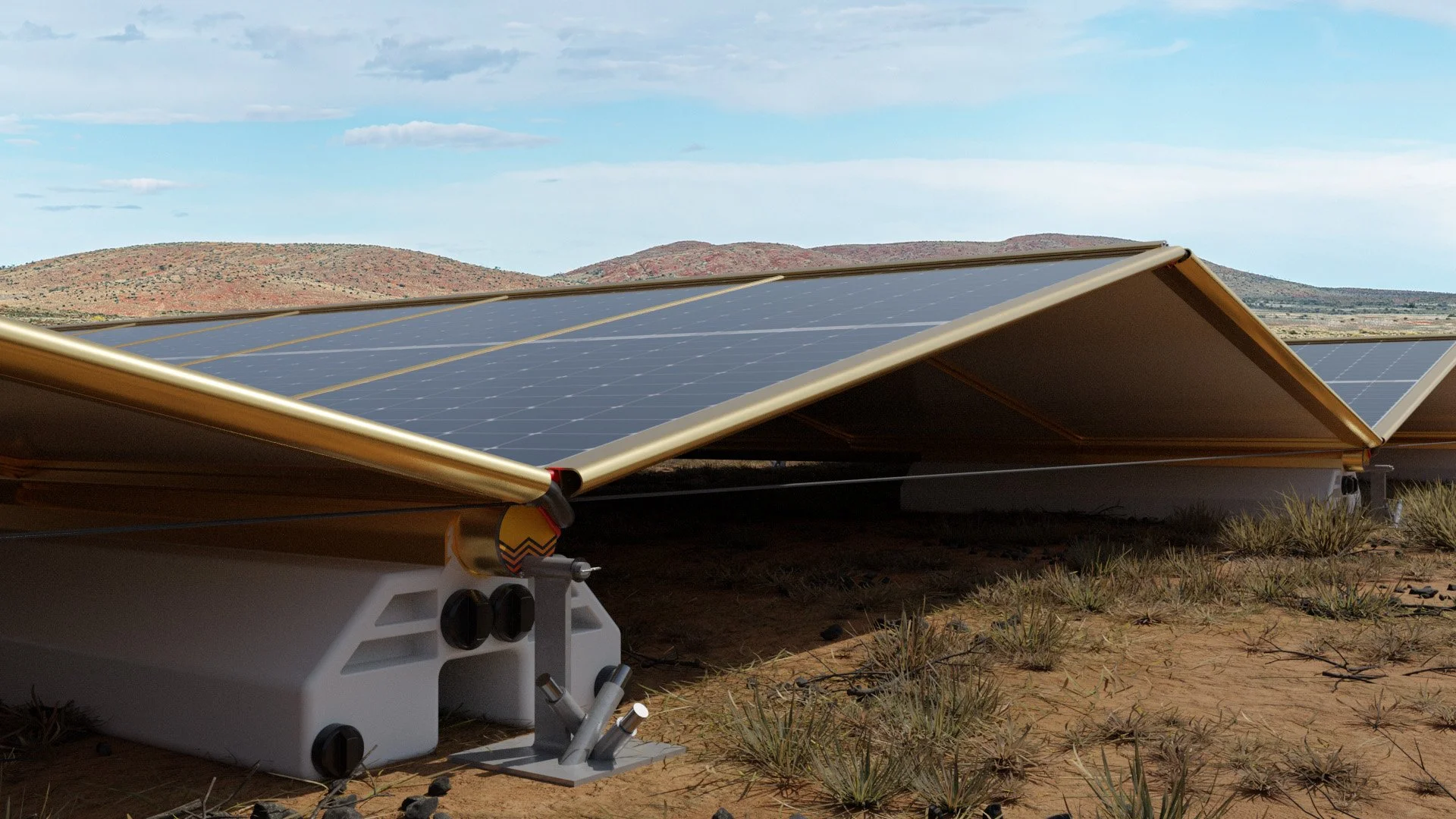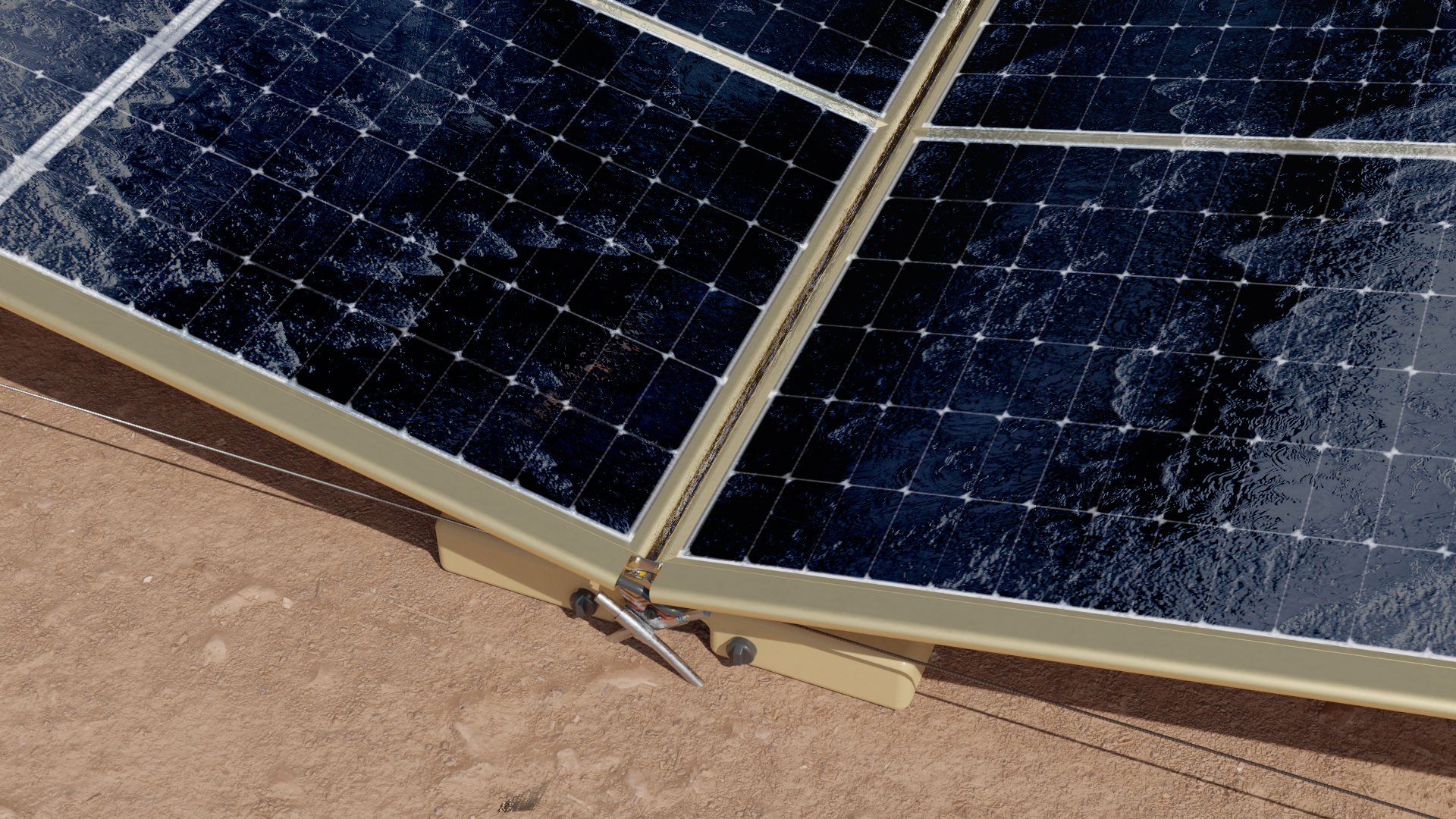
Self-Cleaning System
-

Automated Self-Cleaning
The Solar Waves self-cleaning system uses sensors, a built-in tank, and a pump for automated, interval-based cleaning. Water sprays evenly from the array’s ridge to remove dust and debris, maintaining peak efficiency. By reducing manual cleaning, the system can save up to USD 1 million over 25 years, boosting long-term performance with minimal upkeep.
-

Rainwater Collection
Solar Waves integrates gutters into the frame to collect and filter rainwater for reuse in the self-cleaning system. This closed-cycle design reduces detergent use, limits vegetation growth, and supports easier maintenance. Stored water also adds weight for wind stability, boosting durability and sustainability.
-

Consistent Peak Performance
The Solar Waves Self-Cleaning System maintains up to 95% efficiency with weekly, sensor-driven cleanings. It cleans all panels at once, eliminating the need for robots or manual labor. With simple upkeep like filter changes, it delivers reliable, low-cost performance and long-term energy consistency.

Reusing Water and Saving Resources
Rainwater naturally flows down the Solar Waves array, following the contours of the roof structure and making full use of an east-west solar deployment. As rain falls, it travels down the roof and into valleys between the panel surfaces, ensuring even distribution of water across the array for maximum efficiency. This design capitalizes on the natural elements, harmonizing with the environment to support sustainable operation
.In these valleys, built-in gutters collect rainwater, channeling it directly into water tanks for storage. In dry areas, where rain may be scarce, these tanks can also be refilled as needed to maintain consistent cleaning intervals. By capturing and reusing rainwater with filtration between cycles, the system conserves resources, minimizing water consumption and supporting a continuous cleaning cycle.
Over time, all solar panels, regardless of location, accumulate some degree of dust, dirt, or debris, which can reduce energy efficiency. For large-scale solar arrays, accessing each panel for manual cleaning can be difficult and time-consuming, especially in remote locations. Automated cleaning provides an effective, hands-off approach to maintaining high performance without costly maintenance.
The system’s built-in pumps draw water from the storage tanks, channeling it through conduits in the roof frame to nozzles along the ridge of each array. As water sprays over the panels, it ensures thorough, even cleaning across the entire surface, maintaining optimal energy output and reducing the need for external cleaning services. This design enhances operational independence while maximizing the lifespan and effectiveness of each solar deployment.

